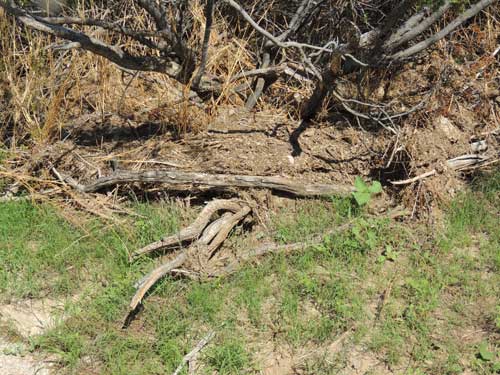Robber Fly
Efferia ? sp.

North side of Harquahala Mts., La Paz Co., Arizona. August 2017. Many eggs were being laid on the surfaces of these twigs directly abovea likely larval breeding habitat, moist decaying plant material, shown below.
Asilidae -- Robber Fly Family

This pile of mostly plant detritus formed as the wash over-flowed with water during a summer monsoon deluge.
In the miniature world of insects, asilids (robber flies) are top predators. Each of the six legs are equipped with sharp, talon-like tarsal claws. The mouthparts include a stout beak-like proboscis that delivers the fatal stab to prey. Indeed, like miniature falcons or accipiters these flies capture flying insect prey on the wing holding them secure with their tarsal claws and delivering fatal bites with the proboscis. There are many species of robber flies common in the Sonoran Desert. Many perch on prominent lookouts such as a boulder or a piece of wood along washes. They sally out and capture a passing insect, often larger than themselves. Some species resemble bees and actually prey on bees.
The robber fly shown is a female and she was busy gluing eggs to the surfaces of creosote bush twigs. This spot was directly above a big mat of dead leaves, twigs and other matter (below left). The collection was formed when a deluge of summer rain flooded the adjacent wash thus sweeping the detritus into a pile. On hatching the minute larvae will drop into this mass. With moisture the rotting mass supports a variety of decomposers and the robber fly larvae will join them. As the larvae tunnel through it they may prey on other insect species and feed upon more nutritious bits they encounter. The details of most Asilidae life cycles are poorly known.